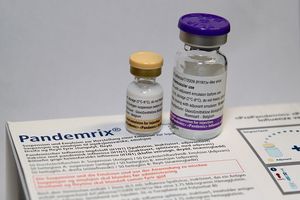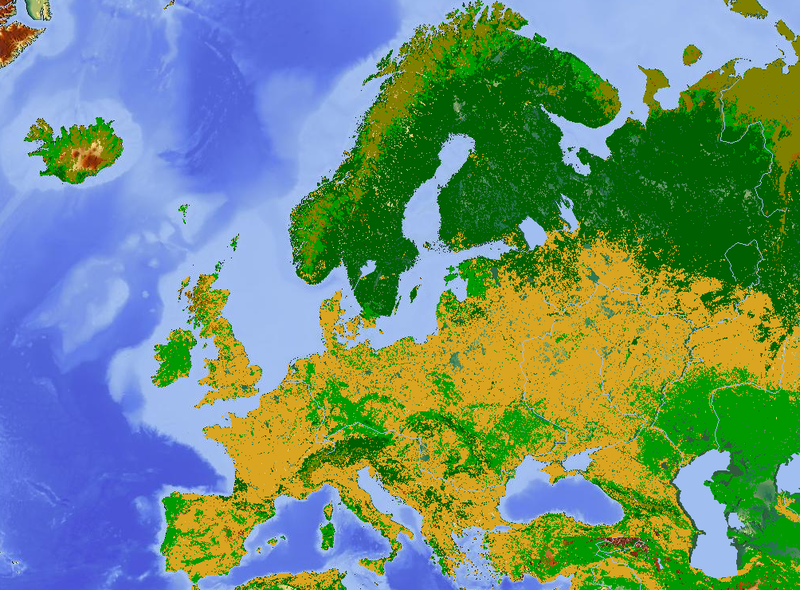Flu Survey - Tracking Influenza Across a Continent
Interview with
John - Well we know surprisingly little about the details about how flu spreads through the community and just how much the burden of flu really is out there in the community because our traditional forms of surveillance are monitoring people going to the GPs. The GP records if they see somebody with flu-like illness, but we know that that's just a very small fraction of the total amounts of disease that there is out there. So what we want to get a handle of is just how much there is out there, how quickly it spreads, and we also want to get to know a bit more about how well a vaccine works. We know that a vaccine doesn't always match up terribly well to the circulating strain, so we want to get a very early indication of that, and our survey can help us do that. And we can also get some indications about simple questions you think you might know the answer to but actually, you don't. So going by public transport, is that actually a risk for flu? And if so, how much of a risk? So these are the  kinds of questions we're trying to address.
kinds of questions we're trying to address.
Chris - Gosh! I hope it's not a risk. Otherwise, we're all going to be in trouble, aren't we? So how are you collecting this data because it sounds like you're going to be collecting quite a bit of data in order to answer some of those questions?
John - Well, we're trying to ask the public to collect the data for us. So, we've set up an online survey called the 'flu survey' and it's at
www.flusurvey.org.uk and what we're asking people to do is just to log on and just to tell us whether they're ill or not, and the first time you log on we ask some background questions about your use of public transport and so on, and whether you've been vaccinated. And after that, all we're asking is that people just log on and just let us know whether they've got any symptoms or not, and actually, we're really interested when people don't have symptoms as well. That's as important to us as when people do have symptoms and if you don't have symptoms, it really takes just two clicks of a mouse and it's all over in a few seconds.
Chris - But of course, those people could have had flu and had no symptoms or equally, they could not have had flu and have no symptoms, so how will you discriminate between the two?
John - It's the difference between when people have got symptoms and when they haven't got symptoms. Your
previous speakerwas talking about a case where individuals act as their own controls and we're trying to do the same really. So, if you log on and tell us that you're fine and then you log on and tell us that you have a bit of a sniffle or something then we can see the difference in the incidence- that allows us then to start to track the spread.
Chris - And once you've got all this data, how will you begin to decode it? How will it inform our understanding of what flu does in the community and how it spreads?
John - Okay, so there's lots of different ways that we can do it. So first of all, we're asking about where people live and so, we can get some idea about the geographical spreads. Some of the geographical information is up there on our website so there's a map that you can see. And if you log on and report, or even if you report that you're fine, you can look to see the incidence of flu in your locality so we can give you an idea about how many other people around you might have flu at the moment. And then we also are looking to do what's known as - well, a matched cohort study. So, what we're going to do is we're going to match people - so for instance, we're going to take people who've been vaccinated and match them with a group who are otherwise epidemiologically similar, so match them with people who are the same age for instance - if they're adults, whether they live with children or not because that's an important risk factor. We match them, and then we'll track to see the incidence of flu in those two groups - so the vaccinated group and the unvaccinated group, and we'll be doing that online live as the epidemic progresses this winter, so you'll be able to see immediately the difference in incidence in the two groups.
Chris - Which will be useful to get an idea as to exactly how good the  vaccine is, but how will you confirm that those people who your system reports have had flu have really had flu compared with people who have had a very bad cold, or some other influenza-like illness that wasn't really flu, it just felt like it?
vaccine is, but how will you confirm that those people who your system reports have had flu have really had flu compared with people who have had a very bad cold, or some other influenza-like illness that wasn't really flu, it just felt like it?
John - At an individual level, that's rather difficult to do. So, each time someone reports, we can't really tell whether they have flu or they have some other virus that's similar to flu. But on average, we can tell whether people have flu. One of the ways we can do it is actually to see whether the vaccine works. Last season for instance, we could monitor the effect of the vaccine and by doing that, we can see that actually, what we're recording, a lot of it actually must be flu. If the vaccine works against it, then it must be flu. One of our sister studies - so we're now doing a study which is identical to a study done in nine other European countries from this moment onwards where we've linked all of our different systems together so they're identical. And one of our sister studies in Belgium is actually going to be doing some testing of the cases that they've observed there in Belgium this season, to see whether they genuinely are flu.
Chris - What's the trajectory of flu both across Britain but also across Europe because historically, we always say that it arrives in Scotland first and then makes its way south? What about the rest of Europe?
John - Yeah. We don't really know and part of the problem is our existing surveillance systems are GP based surveillance systems, so those are the systems that everyone has across Europe and we can't really make comparisons between them because there are differences in the way the GPs records illness, there are differences in the way that people go to see their GP. So there are orders of magnitude differences in flu rates across Europe which doesn't make any sense and we don't really think that if you live in say, Belgium, you're a hundred times more likely to get flu than if you live in Holland. That doesn't make any sense but the system records 100 times higher rates and so, by having this - from this moment onwards, the flu survey and our sister surveys, now that they're absolutely identical, the only difference is they're translated into the local languages, we can now start to see just how quickly it really does move across Europe because we're now all measuring exactly the same thing.









Comments
Add a comment